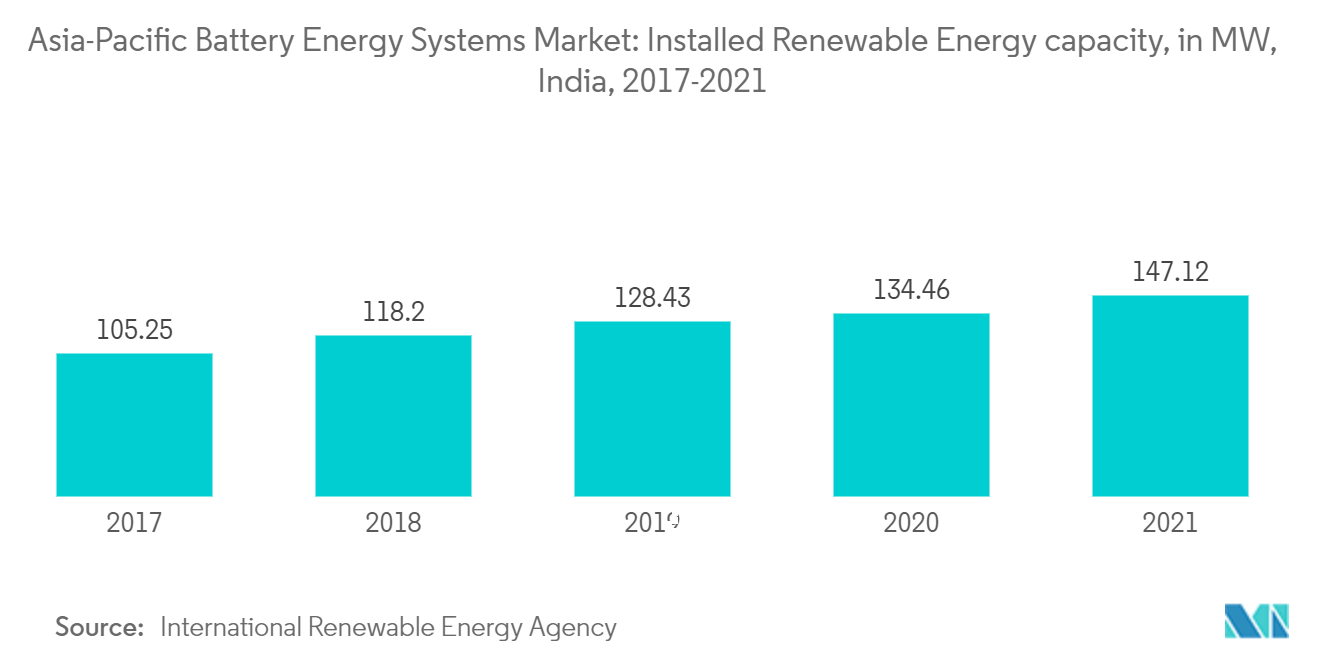Market Trends of Asia-Pacific Battery Energy Storage System Industry
This section covers the major market trends shaping the APAC Battery Energy Storage System Market according to our research experts:
Commercial Sector to Witness Significant Growth
- Utilities can use batteries to store electricity during periods of low demand and tap the stored energy during peak periods to shave peak loads. The demand for energy storage systems in the utility sector is expected to increase in the future due to technical advantages and decreasing prices of energy storage systems.
- The commercial segment has recently been explored by project developers, for whom it constitutes a significant growth opportunity. Critical factors like increasing energy bills and price volatility are expected to drive the segment's growth in the coming years.
- Regions like Asia-Pacific are also seeing rapid population growth and urbanization, increasing the electricity demand. Renewable energy is becoming increasingly cost-effective, and developing countries are expected to add renewable energy to their grid. As of 2021, the Asia-PAcific region's renewable energy generation stood at 1690.1 TWh, doubling in the last five years from 805.1 TWh in 2017.
- Also, many areas are expected to adopt a more distributed approach to grid development, using more local power generation and microgrid systems and thereby creating a potential for growth of the battery energy storage system market in the region.
- Driven by strong growth in China and India, the commercial and industrial storage segment is expected to reach 9 GW by 2025. due to these, there is high demand for battery energy storage systems from the commercial and industrial sectors.

India to Witness Significant Growth in the Market
- The India Energy Storage Alliance (IESA) has estimated over 70 GW and 200 GWh of energy storage opportunities in India in the coming year, which is one of the highest in the world. Out of 70 GW, over 35 GW of demand is expected from newer applications like solar integration. Hence there is a sizable opportunity for advanced storage technologies in the new applications.
- In August 2022, JSW Energy secured 500 MW/1 GWh of battery energy storage system projects from Solar Energy Corp. of India and set up the battery energy storage system (BESS) in Rajasthan, close to the Fatehgarh-III substations of the interstate power transmission system.
- Moreover, India may also emerge as the third-largest energy storage installation country by 2040, i.e., energy storage installations worldwide are expected to multiply exponentially, from a modest 9 GW/17 GWh deployed as of 2018 to 1,095 GW/2,850 GWh by 2040.
- Therefore, with the growing renewable sector, the demand for the battery energy storage system to address the challenges related to intermittency in renewable power generation is expected to grow.
- One of the primary factors driving the growth of the Battery Energy storage systems market in India is the growth of the renewable energy market. As of 2021, India is the 2nd largest renewable energy market in the region, and the installed renewable energy capacity has grown steadily, from 105.25 GW in 2017 to 147.12 GW in 2021.
- As variable renewable energy sources such as wind and solar are inherently variable, so cannot be directly integrated into the primary energy grid without risking grid instability and need to be paired with Battery Energy Storage systems to store excess generation and stabilize the grid by providing frequency regulation and ancillary services. Hence, as India installs more renewable energy capacity, the demand for Battery Energy Storage systems is also expected to increase steadily during the forecast period.
- Hence, based on the above-mentioned factors, India is expected to witness significant demand for the energy storage systems market in the Asia-Pacific region.


